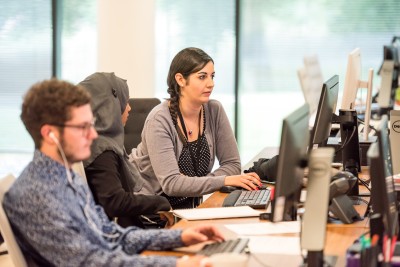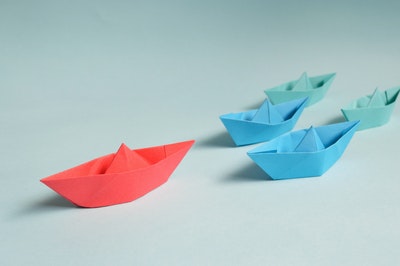Expanding Your Food Business: 5 Custom Mylar Bags and Other Eco-Friendly Packaging
There are a lot of things to consider when expanding your food business. The most important factor is your brand and its philosophy. This article discusses how you can grow your brand following an environmentally conscious approach.
Given the many environmental challenges the world has seen over the past couple of decades, businesses are putting more importance on lessening their environmental and ecological footprints. Many businesses have started switching to more environmentally friendly packaging options like biodegradable custom Mylar bags. Even plastic producers are trying to go green nowadays.
Because of this new environmental awareness, the demand for environmentally friendly options is on the rise. Buyers make conscious efforts to support businesses that promote these options. Businesses that are just starting out are expected to grow while taking the impact they may have on the environment into consideration.
This means that, as much as possible, they should choose environmentally friendly options over anything. Otherwise, they could miss out on attracting this market. Or worse, face public scrutiny.
A lot of pressure is put on food businesses, in particular, to go the environmentally friendly route especially when it comes to packaging. Here are some options you can consider:
#1 Biodegradable and/or Reusable Custom Mylar Bags
While traditional bags aren’t exactly environmentally friendly as they are essentially made up of polyester sheets, they can be made so by adding biodegradability and/or reusability factors.
Biodegradable Mylar Bags
Mylar bags can be made biodegradable. This means that, when thrown into a landfill, they won’t take up space for long as they will soon biodegrade. They will pose little threat to wildlife, as well, as their ability to decompose in time will minimize the risk of exposure to animals.
Traditional plastic bags take thousands of years to biodegrade. This doesn’t only take up space in landfills (or anywhere in the world, really), the risks of exposure to animals are high, too. Animals can mistake these plastic bags for food or even get caught up in them and eventually suffocate or choke.
Choosing biodegradable Mylar bag options over non-biodegradable options greatly reduces these risks and would definitely be the preferred option for one’s customers.
Reusable Mylar Bags
Single-use Mylar bags are a big no! As such, making these bags that are made out of high-performance polyester film reusable would translate to fewer bags being thrown out. The less waste, the better.
Of all the options listed in this article, Mylar bags are the most accessible. They are affordable and easy to source. If you need chocolate bags this is a great way to get something that is reusable and environmentally friendly.
Most of the time, suppliers even offer customization or personalization options, too. So, they not only can be good for the environment, but they can also help out heaps with marketing.
#2 Cornstarch Bags
Cornstarch packaging has easily become one of the most sought-after environmentally friendly packaging options out there. There are even cornstarch cutlery and tableware options that food businesses can use for their operations
Of course, this material was derived from the corn plant. Its plastic-like properties make it perfect for food packaging.
Cornstarch packaging and utensils are just as strong as their plastic counterparts. So, with cornstarch packaging, businesses can enjoy the practicality of plastic without making a big, negative impact on the environment.
This option isn’t without its problems, though. As corn is a popular dietary staple for both humans and animals, adding the production of cornstarch bags to the list of its uses may drive corn prices up.
#3 Seaweed Bags
Seaweed is a great option for food packaging. Made from the gelatinous substance called agar, this material has found its way into the hearts of many consumers and businesses alike because of its applications.
Seaweed is an abundant resource so creating packaging materials out of seaweed is a very sustainable option. Being quite new to the environmentally friendly packaging scene, many prototypes are still being produced for this material.
When considering this material for your business expansion, it’s important to do thorough research on your suppliers and the quality of their work. Some prototypes are not as strong as plastic or even cornstarch packaging and some are highly dissolvable in water.
So, it may take a while to find seaweed packaging options that fit your food business perfectly especially if the food you offer isn’t dry.
#4 Mushroom Bags
Like seaweed, mushrooms are an abundant resource and can be easily grown and farmed. Sustainable, eco-friendly packaging can also be made from this.
Actual mushroom packaging isn’t 100% made of mushrooms, though. They’re actually made up of cleaned and ground agricultural waste and are only fused together using mushroom roots. This can then be molded into different shapes. So, suppliers are able to make more than just bags for your packaging needs.
Using mushroom packaging for your business allows you to avoid any petroleum or food sources like cornstarch packaging does.
Its biodegradability is both its pro and its con. It can be composted and broken down into organic matter and even fertilizer.
But because it biodegrades at such a quick rate, keeping a large amount of these bags in inventory can be tricky, especially if the turnover rate for these bags isn’t as quick. They may end up biodegrading in storage if you don’t use them quickly enough for your business.
Using this material for your packaging may require you to order in smaller quantities which may not always be a very profitable option.
#5 Organic Fabric Bags
Another alternative to using plastic bags for your food business packaging is using organic fabric bags instead. These bags can be made from a number of organic materials like hemp, recycled cotton, palm leaves, and even tapioca.
Aside from being reusable, these bags are also biodegradable. So, even if they’re thrown out, they eventually biodegrade. On average, they start biodegrading after 100 days which is definitely better than the 10,000 years that it takes for a single plastic bag to biodegrade.
The only downside to these bags is their compatibility with food. It’s best used with dry food products as wet food products will definitely end up soiling the material.







